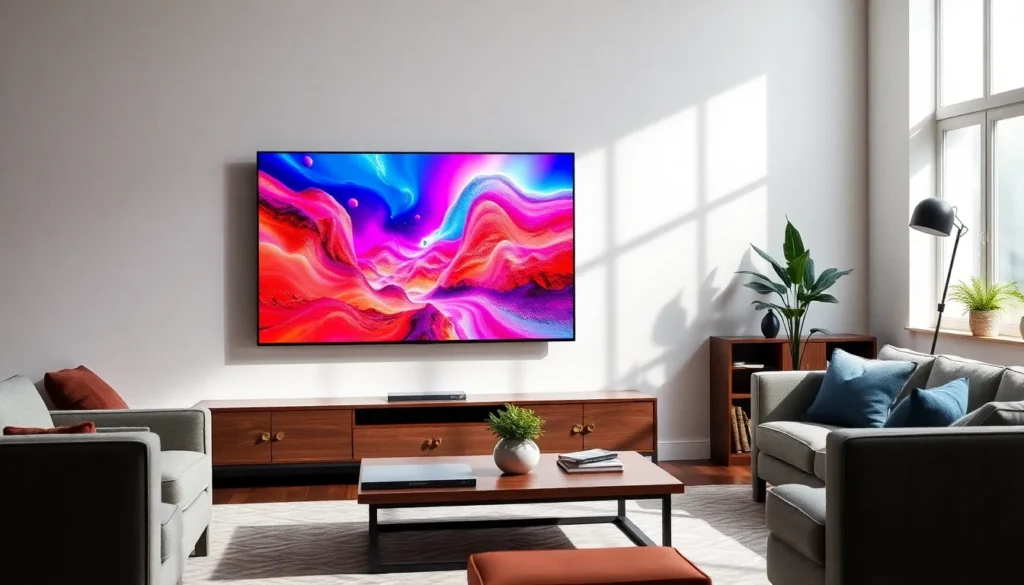Ever stared at a blank Google Docs page and thought it looked a bit too… well, bland? It’s like inviting friends over for a party but forgetting to put on some music. Adding a splash of background color can transform your document from drab to fab in seconds. Whether you’re crafting a report, planning a wedding, or just trying to impress your boss, a little color goes a long way.
Table of Contents
ToggleUnderstanding Google Docs Background Color
Adding a background color in Google Docs can dramatically transform the appearance of a document. A colored background enhances aesthetics and helps emphasize key content. Users often choose subtle shades to ensure text readability. Bright colors may draw attention but can overwhelm, making selection crucial.
Accessing the background color option is simple. It resides in the “File” menu under “Page setup.” Choosing the right color invokes thoughts of the document’s purpose. For professional documents, lighter hues usually work best. In contrast, vibrant colors may suit creative projects or event invitations.
Collaboration comes into play when sharing documents. Team members may have differing opinions on colors, ensuring a consensus may foster creativity. Use feedback to refine choices, maintaining harmony between functional and visual elements.
Trial and error often leads to the ideal background. Experimenting with different shades allows users to see immediate changes. Users can set the background color for the entire document or individual sections, providing flexibility based on content needs.
Studies indicate that visual elements impact reader engagement. A well-chosen background color can make a document more inviting. Presentations benefit from color psychology, as specific hues evoke emotions and set tones for the content.
Understanding the role of background color in Google Docs goes beyond aesthetics. Strategic choices enhance readability and maintain engagement across various document types. Prioritizing color selection based on purpose helps create appealing visual presentations.
Steps to Put a Background Color on Google Docs
Adding a background color to Google Docs is simple and enhances document appeal. Follow these steps to change the background color effectively.
Accessing the Page Setup
Users can access the Page setup option by navigating to the “File” menu at the top left corner. Clicking on “File” reveals a dropdown menu. From there, selecting “Page setup” provides access to various formatting options. Within this window, see the “Page color” section at the bottom. This area allows for color selection to change the document’s background easily.
Choosing Your Background Color
Selecting the right background color creates a pleasing visual effect. After opening the “Page setup” menu, users find a color palette. Choosing subtle shades improves readability for most documents. Bright colors work well for creative projects and can attract attention. Preview the selected color before applying it to ensure it meets expectations. Users may prefer experimenting with several shades to identify the perfect fit for their document’s purpose.
Customizing Your Background
Adjusting a document’s background enhances its visual appeal and readability. Users can customize colors and imagery to create engaging content.
Applying Colors to Specific Sections
Highlighting specific sections with distinct colors draws attention to vital information. Users select a section by clicking and dragging the cursor, then access the background color option from the “Format” menu. Custom colors can elevate headings, quotes, or important text. For effective differentiation, lighter shades are often chosen for background areas, while darker text ensures readability. Previewing colors beforehand helps confirm the selection fits the document’s overall style.
Using Images as Backgrounds
Incorporating images transforms the document into a unique canvas. Users insert an image through the “Insert” menu, then position it behind text by selecting “Wrap text” or “Break text.” Images can capture the theme of a project, enhancing emotional resonance. Choosing PNG or JPEG formats ensures compatibility. Adjusting image transparency can maintain visibility for overlaid text, balancing aesthetics with functionality. Experimenting with various images aids in finding the right match for the document’s purpose.
Tips for Effective Background Colors
Choosing the right background color enhances document readability and visual appeal. Subtle colors, like soft pastels or light grays, improve text clarity by providing a gentle contrast. Brighter colors can be eye-catching but may distract from the content; use them strategically to highlight key sections.
Combining colors thoughtfully brings out important elements. For instance, pairing light backgrounds with dark text enhances legibility, while dark backgrounds with light text can create a striking visual effect. Consider the document’s purpose when selecting colors to ensure they align with the intended message.
Experimenting with different shades offers flexibility and creativity. Users benefit from testing several options in one document, quickly assessing what works best for various sections. This trial and error approach encourages refinement and personalization, ensuring the color match is spot on.
Collaborating with colleagues can refine color choices. Outside opinions often spark new ideas and lead to a balanced result that appeals to multiple viewers. Engaging in discussions about color selection fosters creativity and enhances the document’s overall impact.
Adjusting transparency for images within backgrounds is another effective method. Users can insert images while ensuring text visibility by modifying transparency settings. Making images less opaque creates visual interest without compromising readability.
Leveraging color psychology can guide users in their choices. Colors evoke emotions; for example, blue conveys trust, while yellow promotes cheerfulness. Understanding these associations helps create documents that resonate with intended audiences, ensuring effective communication.
Adding a background color to Google Docs is a simple yet effective way to elevate document presentation. By selecting the right colors users can enhance readability and visual appeal. Experimentation with different shades allows for a personalized touch that aligns with the document’s purpose.
Collaboration with others can lead to creative solutions and a more balanced approach to color selection. Whether it’s a professional report or a creative project the right background can make all the difference. With the steps outlined in this article users can confidently transform their documents into engaging visual experiences. Embracing color thoughtfully ensures that content stands out while maintaining clarity.





